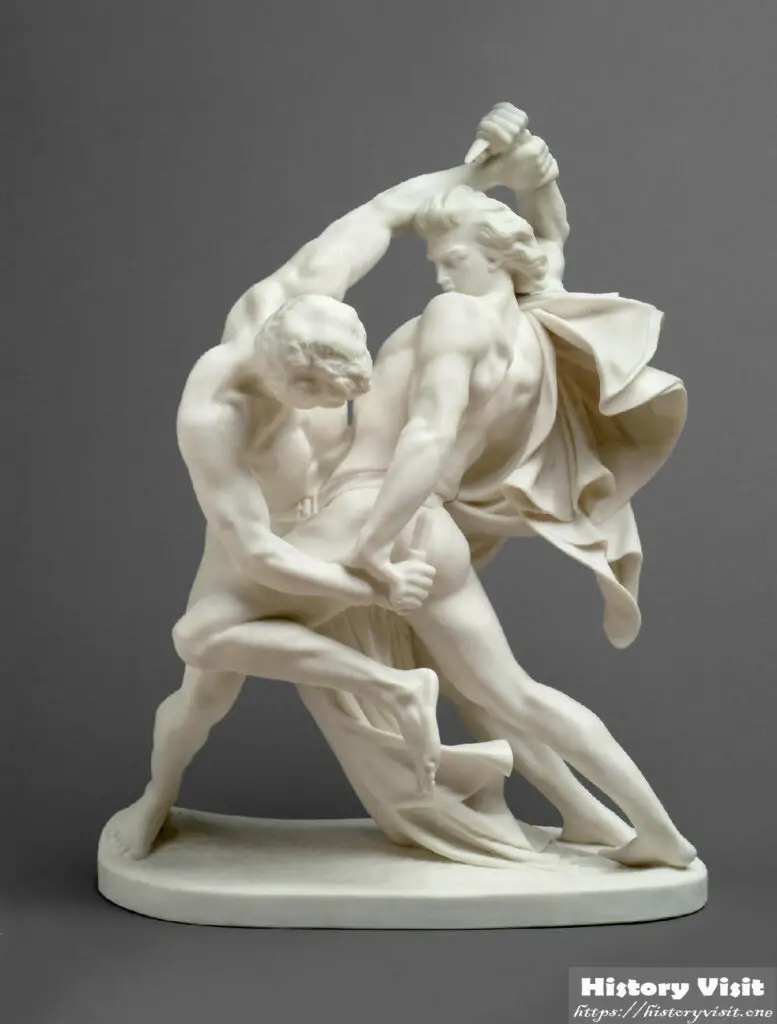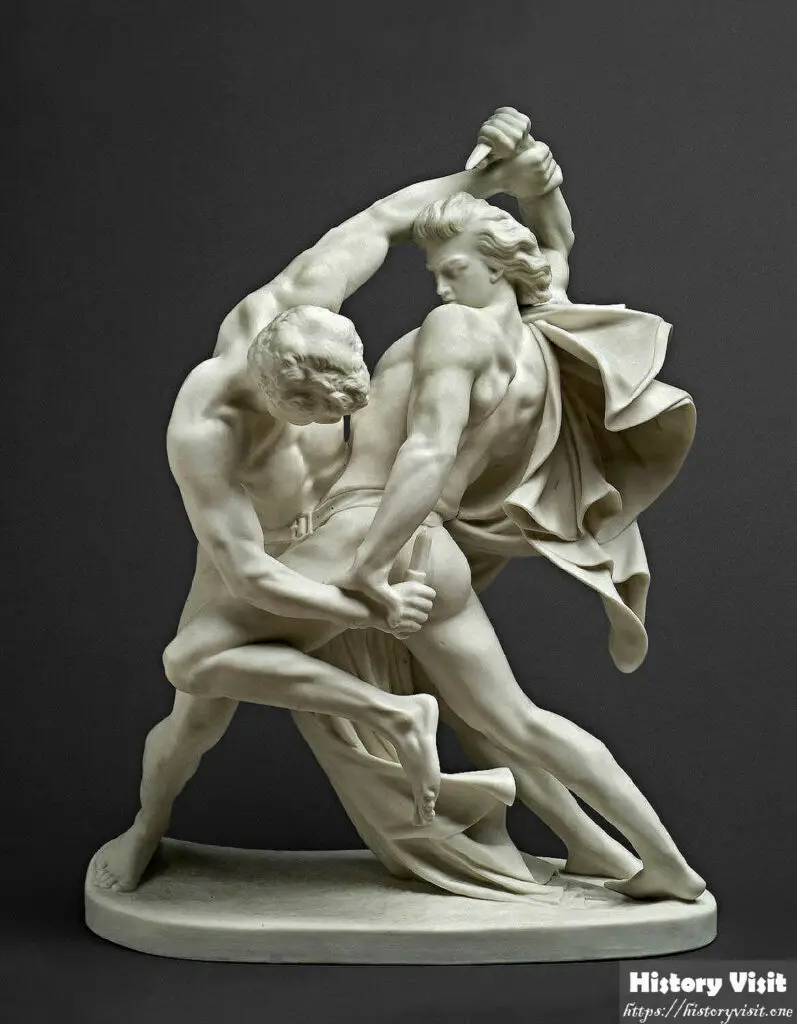Harmony in Stone: Jean Peter Molin’s ‘The Grapplers’ (1862)

In the annals of sculpture, certain masterpieces resonate with timeless elegance and artistic brilliance. Jean Peter Molin, a sculptor of remarkable talent born in 1814, left an indelible mark on the world of art, with his oeuvre reflecting a profound understanding of form, emotion, and the human condition. As we delve into the life and artistic journey of Jean Peter Molin, explore his works preceding “The Grapplers (1862),” uncover the narrative behind this compelling sculpture, and examine its impact on the realm of art, we enter the realm of Molin’s genius, where stone comes alive with expressive beauty.
Molin’s early life, nurtured in the cultural ambiance of Stockholm, Sweden, laid the foundation for his artistic pursuits. Born into a family of artists, he inherited a passion for sculpting that would define his future. His journey led him to the Royal Swedish Academy of Fine Arts, where he honed his skills, imbibing the classical influences that permeated the academic atmosphere. Before crafting “The Grapplers” in 1862, Molin had already established himself as a sculptor of note, creating works that showcased his adeptness in portraying both classical and contemporary subjects.
Molin’s talent was not confined to a singular medium, as he explored both bronze and marble, infusing each sculpture with a distinctive touch. His earlier works bore witness to his technical precision and a keen eye for anatomical accuracy, laying the groundwork for the masterpieces that would follow. Molin’s artistic trajectory hinted at a sculptor deeply connected to the nuances of the human form and the emotional resonances embedded within it.
The creation of “The Grapplers” in 1862 was not arbitrary; rather, it emerged from Molin’s contemplation of the human condition and the interplay of physical and emotional forces. The narrative behind the sculpture traces back to Molin’s fascination with the struggles and triumphs inherent in human relationships. “The Grapplers” captures a moment frozen in time, depicting two figures engaged in a poignant embrace, their bodies entwined in a dance that speaks of passion, tension, and a profound connection.

The dedication to building “The Grapplers” showcases Molin’s commitment to conveying the complexities of human emotion through his art. The sculpture, executed in marble, reflects Molin’s mastery of the medium. Every curve, every contour, and every expressive detail serves as a testament to the artist’s craftsmanship. Molin’s decision to depict the figures in a dynamic and intertwined pose required a nuanced understanding of anatomy, balance, and the subtleties of emotional expression.
Molin’s craftiness in executing “The Grapplers” lies not only in his technical skill but in his ability to infuse the sculpture with palpable emotion. The details, from the strands of hair to the creases in the fabric, convey a sense of realism that transcends the materiality of the medium. The expressions on the faces of the figures reveal a depth of feeling, inviting viewers to engage with the narrative and find resonance in their own experiences.
The impact of “The Grapplers” on the world of art is profound, as Molin’s creation transcends its immediate context to become a universal exploration of human connection. The sculpture’s presence in both public and private collections attests to its enduring ability to evoke contemplation and introspection. Molin’s contribution to the world of art extends beyond the physicality of the sculpture, sparking dialogues about the nature of relationships and the artistic representation of human emotion.
As we reflect on the legacy of “The Grapplers,” we recognize Molin’s ability to capture the complexities of human relationships in a medium that defies temporal constraints. The impact of the sculpture lies not only in its technical brilliance but in its ability to resonate with viewers across time and cultural boundaries. “The Grapplers” is more than a sculpture; it is a testament to the enduring power of art to convey the nuances of the human experience.

In conclusion, Jean Peter Molin’s “The Grapplers” (1862) stands as a sublime embodiment of artistic brilliance and emotional depth. Molin’s journey as an artist, reflected in his earlier works and culminating in this masterpiece, reveals a sculptor deeply attuned to the human condition. As we immerse ourselves in the expressive beauty of “The Grapplers,” we are reminded that in Molin’s hands, stone becomes a medium for translating the complexities of human emotion into a timeless and universal language.



Harmony in Stone: Jean Peter Molin’s ‘The Grapplers’ (1862) – History Visit